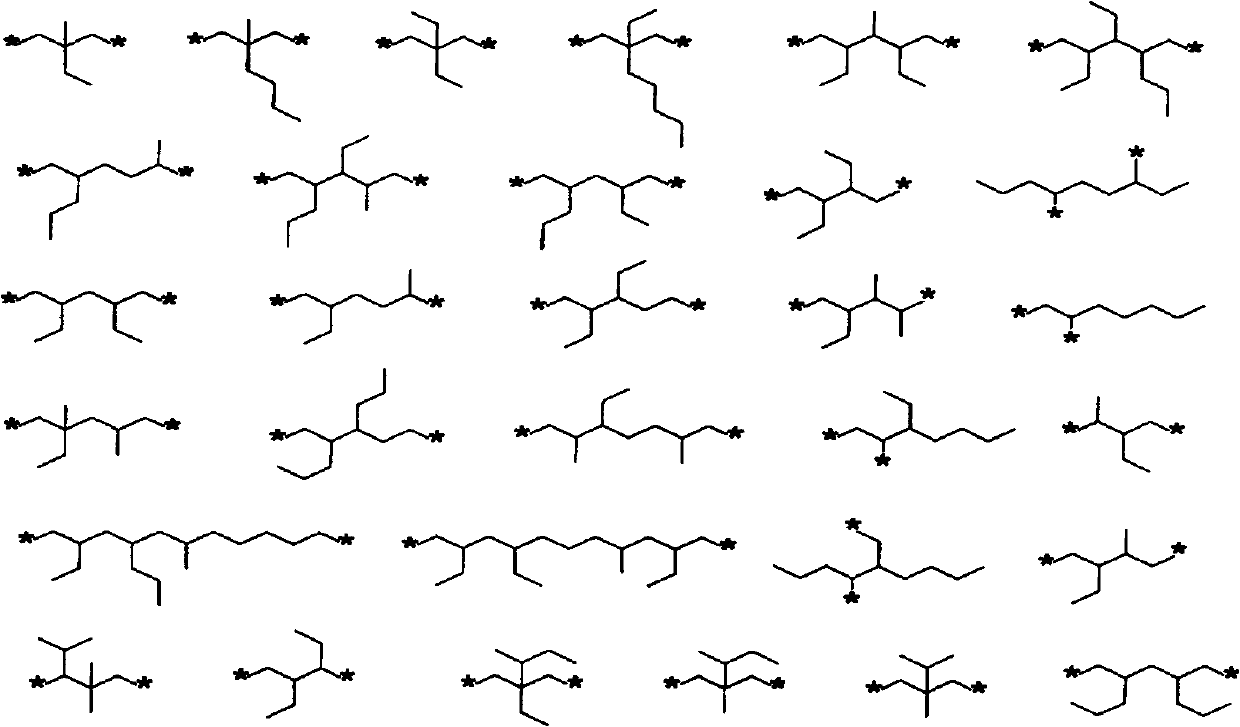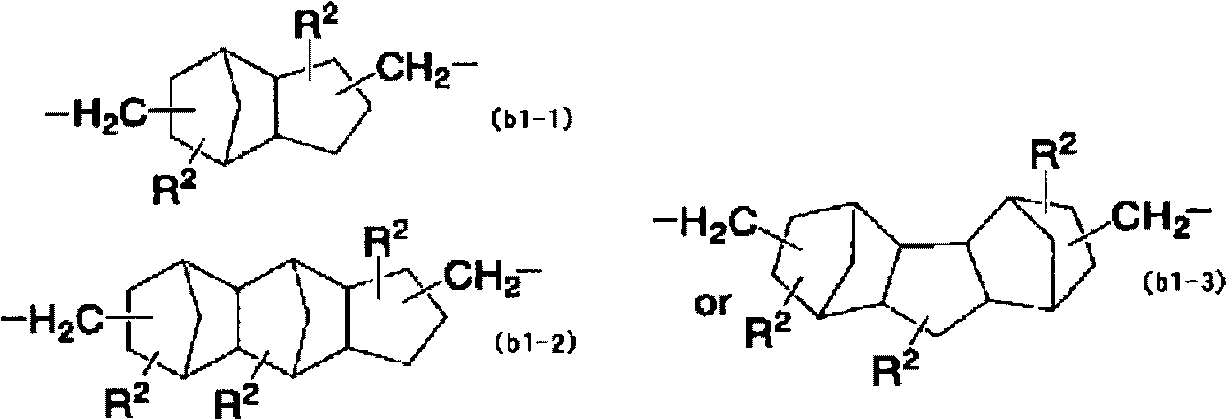Polyvalent carboxylic acid, composition thereof, curable resin composition, cured product, and method for manufacturing polyvalent carboxylic acid
A polycarboxylic acid and composition technology, which is applied in the preparation of organic compounds, the preparation of carboxylic acid esters, chemical instruments and methods, etc., can solve the problems of quality deterioration, inability to obtain stable performance, poor curing and other problems
- Summary
- Abstract
- Description
- Claims
- Application Information
AI Technical Summary
Problems solved by technology
Method used
Image
Examples
Embodiment 1
[0217] Embodiment 1 (polycarboxylic acid composition A1)
[0218] In a flask equipped with a stirrer, a reflux condenser, and a stirring device, 10 parts of toluene and 2,4-diethyl-1,5-pentanediol (manufactured by Kyowa Hakka Chemical Co., Ltd.; キヨウワジオオール PD9) 80 parts, a mixture of methyl hexahydrophthalic anhydride and hexahydrophthalic anhydride (manufactured by Shin Nippon Chemical Co., Ltd.; Rikacid MH700 ratio 7:3, hereinafter referred to as acid anhydride H1) 168 parts were heated and stirred at 100° C. for 4 hours. At this point, the reaction was terminated after confirming the disappearance of the raw material (1 area % or less) by GPC. After completion|finish of reaction, the residual solvent was distilled off using the rotary evaporator, and 246 parts of polyhydric carboxylic acid compositions (A1) of this invention were obtained. The resultant was a colorless solid resin with a polycarboxylic acid content of 97 area % as measured by GPC. In addition, the function...
Embodiment 2
[0219] Embodiment 2 (curing agent composition B1)
[0220] 75 parts of acid anhydride (H1) was added to 25 parts of polyvalent carboxylic acid composition (A1) obtained in Example 1, and it was made to dissolve uniformly, and the hardening|curing agent composition (B1) of this invention was obtained. The viscosity at 50°C was 450 mPa·s (E-type viscometer).
Embodiment 3
[0221] Embodiment 3 (curing agent composition B2)
[0222] Into a flask equipped with a stirrer, a reflux condenser, and a stirring device, 2,4-diethyl-1,5-pentanediol (manufactured by Kyowa Hakka Chemical Co., Ltd.; Kiyowajiol PD9) was added while purging nitrogen gas. ) and 100 parts of acid anhydride (H1) were heated and stirred at 60° C. for 4 hours. It was confirmed by GPC that 2,4-diethyl-1,5-pentanediol was 1 area % or less. 120 parts of hardening|curing agent compositions (B2) containing the polyhydric carboxylic acid composition of this invention were obtained. The obtained reaction product was a colorless liquid resin. The composition ratio measured by GPC was 52 area % of polyhydric carboxylic acid (A1), and 48 area % of the total amount of methyl hexahydrophthalic anhydride and hexahydrophthalic anhydride. In addition, the functional group equivalent was 197 g / eq. The viscosity at 50°C is 1340 mPa·s (19700 mPa·s at 25°C; E-type viscometer).
PUM
| Property | Measurement | Unit |
|---|---|---|
| Viscosity | aaaaa | aaaaa |
| Softening point | aaaaa | aaaaa |
| Melt viscosity | aaaaa | aaaaa |
Abstract
Description
Claims
Application Information
 Login to View More
Login to View More - R&D Engineer
- R&D Manager
- IP Professional
- Industry Leading Data Capabilities
- Powerful AI technology
- Patent DNA Extraction
Browse by: Latest US Patents, China's latest patents, Technical Efficacy Thesaurus, Application Domain, Technology Topic, Popular Technical Reports.
© 2024 PatSnap. All rights reserved.Legal|Privacy policy|Modern Slavery Act Transparency Statement|Sitemap|About US| Contact US: help@patsnap.com










